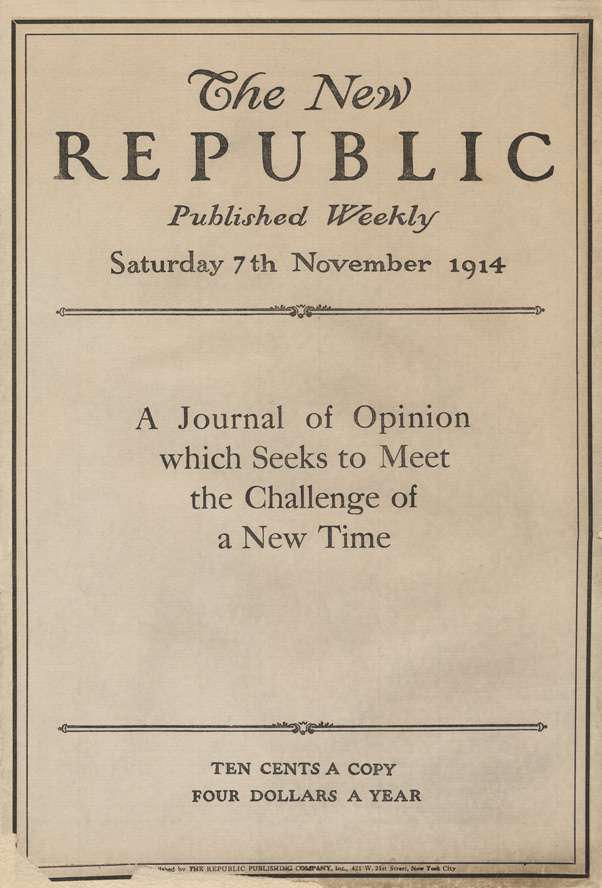History Repeats Itself at The New Republic
The latest shift at a magazine that has changed course many times before

A liberal magazine, once influential but lately in decline, is purchased by a wealthy outsider. The new owner promises continuity but turns out to have ideas of his own, and after a brief transitional period he starts to impose his will more forcefully. After a staff walkout, the venerable institution is left in the hands of an inexperienced new crew that doesn't seem to have much respect for the magazine's heritage.
That may sound like what's going on at The New Republic right now. But it's also what happened at The New Republic four decades ago, after Martin Peretz purchased the magazine from Gilbert Harrison. Here's how The American Prospect described the transition in a 2007 article:
By the late 1960s, TNR had long since lost its cachet as the voice of re-invigorated liberalism—a cachet that was perhaps best illustrated when the dashing, young President Kennedy had been photographed boarding Air Force One holding a copy. When he sold the magazine to Peretz, Harrison believed he had secured Peretz's promise to let him continue to run the magazine for three years. This plan quickly foundered, however, when Peretz got tired of reading rejection notices for articles he hoped to publish in the magazine at the same time he was covering its losses. Soon Harrison's Queen Anne desk and his John Marin paintings were moved out of the editor's office. Much of the staff, which then included Walter Pincus, Stanley Karnow, and Doris Grumbach, was either fired or chose to resign. The staffers were largely replaced by young men fresh out of Harvard, with plenty of talent but few journalistic credentials and little sense of the magazine's place in the history of liberalism.
Sounds pretty familiar, down to the outlet's bygone status as the in-fight magazine on Air Force One.
People upset about the current changes at TNR keep invoking the publication's 100-year history, implying that we're watching the death of the "real" New Republic. But if you actually look at that history, you'll see that the institution has changed course many times before, sometimes drastically. This is a magazine that went from publishing apologias for Stalin to publishing apologias for the Nicaraguan contras, with yet more incarnations in between. Sometimes it sets the trends in technocratic liberalism, and sometimes it merely follows them. Right now it's getting a bracing dose of the latest flavor of center-left thinking, the kind most at home in Silicon Valley. (Though Chris Hughes, the Facebook plute who now owns TNR, still passed through the magazine's traditional training ground of Harvard before he made his millions in cyberspace.)
Look: I don't fault The New Republic's staffers and contributors for protesting what's happening at their magazine. Hughes reportedly treated outgoing editor Franklin Foer very poorly, and the new CEO's comments about what he wants to do with the outlet are not exactly inspiring. (They sound, in Daniel Drezner's words, "like someone went to a TED talk in Palo Alto and mined every business cliche possible.") But what we're watching is in no way a radical break with The New Republic's history. It may even be what a longtime TNR-watcher ought to expect.
(Bonus link: The one article I ever wrote for TNR.)
Free Minds and Free Markets aren't free! Support Reason's annual Webathon with a tax-deductible donation and help change the world in a libertarian direction. For details on giving levels and swag, go here now.


Show Comments (20)